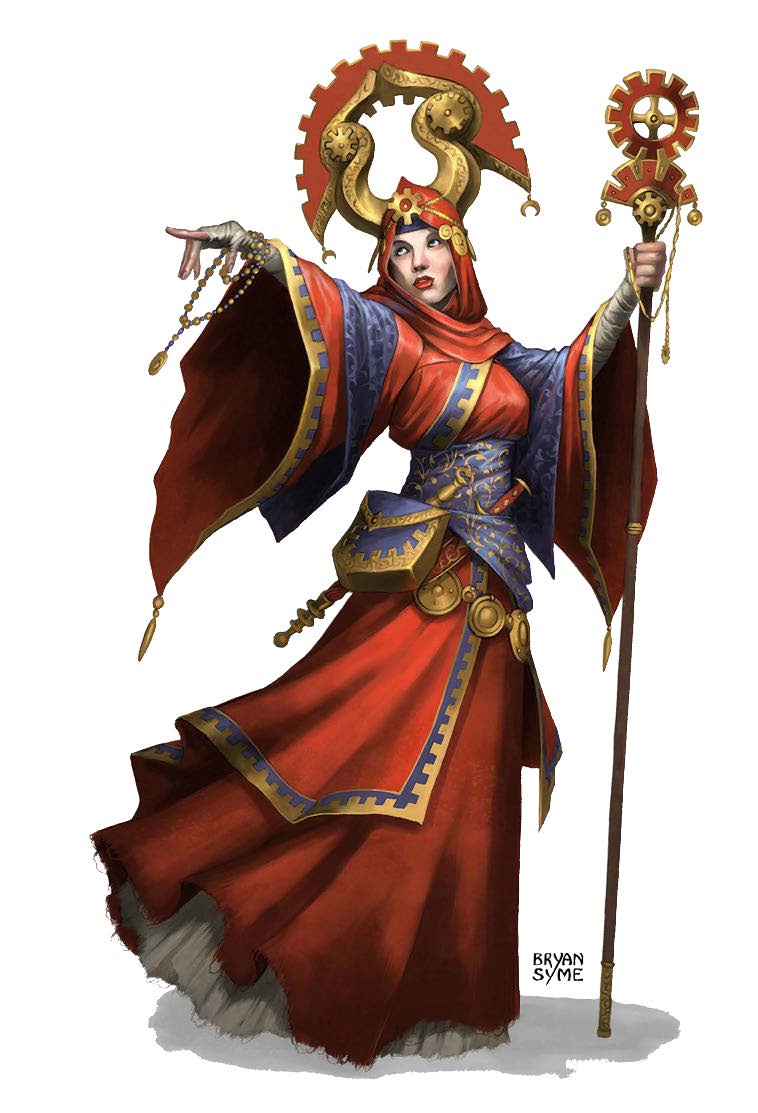
“Great, a new game to learn! Let me just open up this rulebook. Hmm…”
As GMs, we are often tasked with explaining the rules of our RPG to new players. The rules to our games can be cumbersome, and simply handing a new player the rulebook is a sure way to scare them off for good. You are opening a doorway and that threshold should be welcoming to all. So the order in which you explain the rules is crucial.
It is important to understand that rulebooks serve two basic purposes. They teach the rules to players new to the game, but they also serve as a reference tool for GMs and players during a game session. Most rulebooks are arranged in a way that supports players during gaming sessions, so explaining the rules from page 1 isn’t the best way to introduce new players to the game. The best way to introduce the game is by answering the big questions in the order they are likely to occur to new players. The first question they want answered is, “What is this game about?”
As explained previously, the idea that players in roleplaying games take the parts of their characters is the most important idea to get across. But the next idea to explain is that the game is about the “three pillars”: social interaction, exploration, and combat, and all of these are essential parts of the game. The rules are just tools that arrange and support these pillars.
Social Interaction. The rules of social interaction are something we don’t think about very often, but there is a structure to support these efforts. Notably, there’s the basic idea that as each player speaks and acts as their character, the GM will speak and act as all the other entities in the game world. So when the players decide their characters want to get an NPC to act in a particular way, what rules decide whether they are successful?
First, the GM decides the NPC’s motivations before the interaction takes place. The rules give each character skills, and several of these are for social interaction: Deception, Intimidation, Insight, Perception, and Persuasion in particular. You’ll want to remind players that no matter what the character’s score they always have a chance at success when using these skills. (Because they shouldn’t be making a roll if there’s no chance.) You also need to show them that these skills are not mere dice rolling. The players explain what the character says that’s supposed to be persuasive or how they are deceiving the NPC, and then if it’s possible to succeed, the GM calls for a skill check roll. It’s important that the player understands that these are not magical effects. If an NPC’s nature would preclude them siding with the character, then no persuasion will be possible. Note that skills are not as powerful as spells that charm characters.
Exploration. Exploration is supported by rules as well, though sometimes how to apply these rules can be problematic. It’s easy enough to apply survival skills for tracking and wayfinding. You determine the difficulty based on the terrain involved. And if there are traps and other obstructions, then Investigation and Perception will determine the characters’ fates.
The most difficult exploration tasks involve puzzles that the characters must solve. The frequency of puzzles the characters encounter is based on the players’ enjoyment of these things. If they love puzzles, then use them all the time (there are many you can find on the internet and adapt for game use). If the players get frustrated with puzzles, then use them sparingly. The choice of how to adjudicate those puzzles involves some of your own preferences. If the characters encounter a logic puzzle that must be solved but the uneducated barbarian is played by a player strong in logic puzzles while the intelligent wizard is played by someone who struggles with these puzzles, you need to decide how to adjudicate the outcome. Some GMs will just present the puzzle to the players who must solve it on their own regardless of the skills of their characters. You could alternately put the burden on character skills and allow an intelligence check to determine if the characters solve the puzzle, though this is often unsatisfying. Another way that works well is to allow the group of players to come up with a solution and then roleplay which of the characters would likely have solved it. This allows the players to act as a hive mind for the characters with high logic stats.
Combat. Explaining the rules for combat is a large part of most roleplaying games. You can explain exactly what initiative is and how dice rolls determine whether a weapon or spell succeeds and how much damage each successful attack does, but the best way is with a demonstration or two. When players are new to the game, you can do this during your session zero. Simply describe an opponent who is attacking, and run a basic combat. Give each player a choice of different actions: a spell attack or a weapon attack. Then roll the dice to determine the results of each action. New players will need a few combats before the mechanics really sink in, and that’s okay. In the beginning, you’ll have to remind the barbarian that they have the option to enter a rage before their attack, but that’s fine because it’s something that the character would know while the player just isn’t used to it yet. Later this will become second nature to the player.
The three pillars are a great way to begin explaining the rules of the game. Your players will understand the goals of the game and the general ways they can use the rules to accomplish these goals. That is more important than beginning with which ability scores are adjusted if they choose certain options.

Nice article the explanation is great
great explanation!